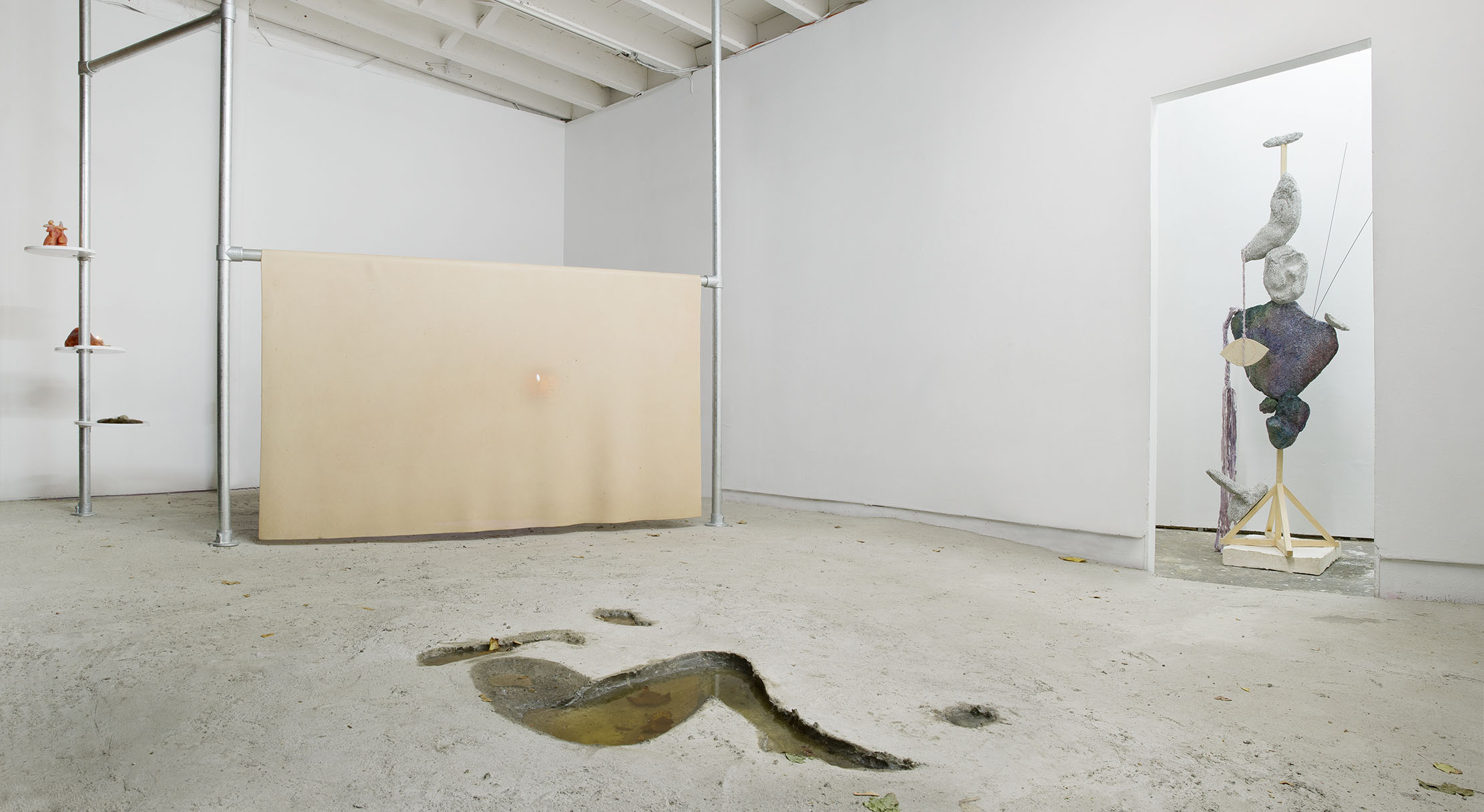Curated by Victoria Bugge Øye and Marte Danielsen Jølbo, Permanent Construction features artists Owen Armour, Anna Daniell, and Melodie Mousset. It was on view at Open Source Gallery (Brooklyn, New York) from November 3−December 1, 2016.
Visual traces of the human body permeate the viewer’s experience, commanding attention and seeping into one’s consciousness throughout the exhibition. The artists’ aura is unmistakable in the space; in each of the works by Owen Armour, Anna Daniell, and Melodie Mousset, the presence and craftsmanship of the artists are wholly evident through the material traces of the objects.
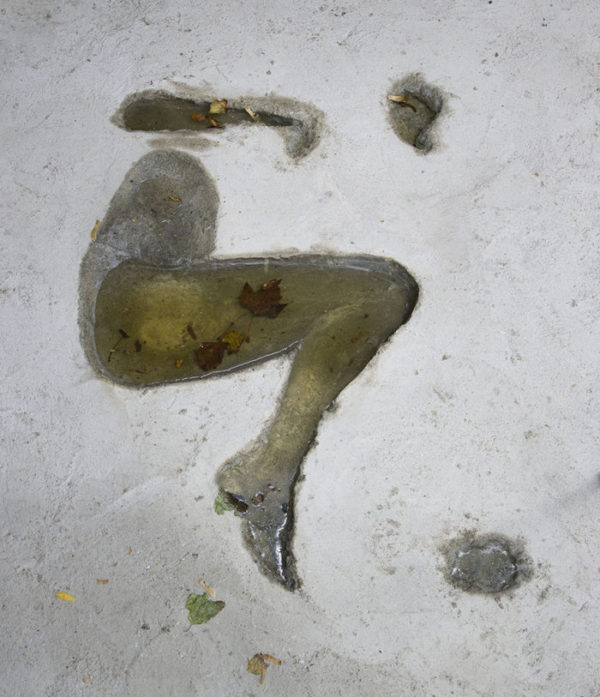
Upon entering the intimate space of Open Source Gallery, the viewer steps around the vestiges of a body imprinted on the floor: the work of Owen Armour. The negative space of the artist’s arm, torso, and leg are cast in the wet concrete, and those cavities are subsequently filled with vaseline. Over time, the detritus of dust and leaves has collected − not only a marker of passing time, but also a subtle interference of the natural world in a manmade installation. Armour’s work, which was created as a site-specific intervention for this show, covers the entirety of the floor with a thin layer of concrete.
This sheath of concrete is echoed by the adjacent work of Melodie Mousset, comprised of an expansive layer of synthetic skin draped over metal scaffolding. For Mousset, the installation is a symbolic reconfiguration of her own body and signifies the potential for constructing a new self. Her work confronts both the internal and external facets of the human body. The artist’s internal organs were scanned at a medical institution in Geneva, then reproduced as 3-D printed models and lastly, cast in wax and bronze as replicas of her own organs. These sculptural objects are strategically placed at varying levels that allude to their position in the body. Gradually the wax has melted down into oozing puddles around the base of the objects, serving as a memento mori and a haunting indication of the passage of time.
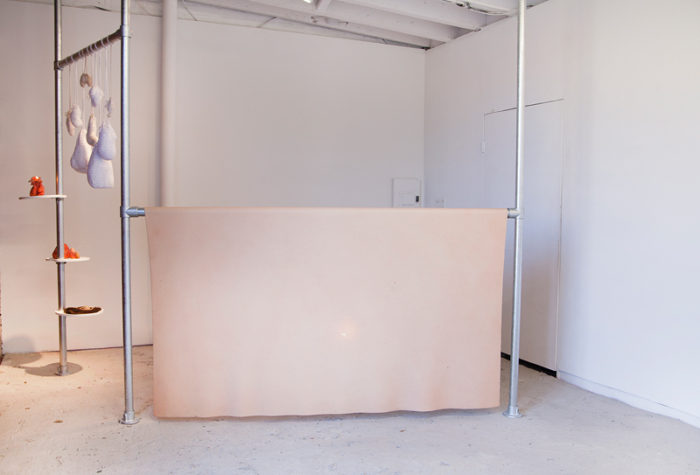
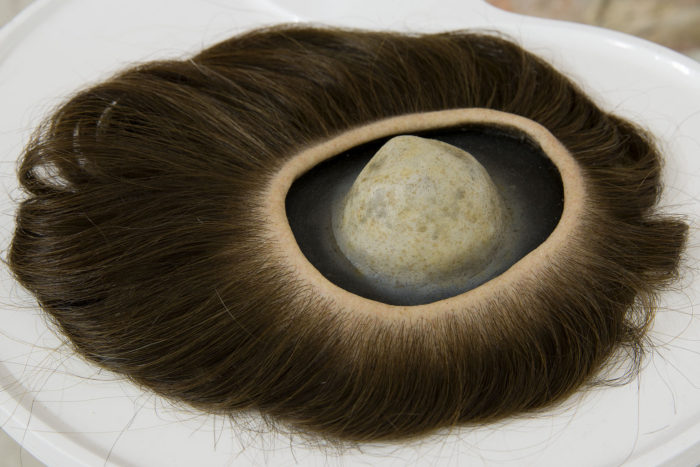
In addition to the internal anatomy, the external membrane of skin materializes in a massive sheet of latex, which hangs over a metal scaffolding. Projections of isolated body parts, film clips, and imagery of a dark cave illuminate the latex on both sides of the work. Here, the organic membrane of skin draped over the metal structure produces a poetic dissonance: the industrial silver beams, juxtaposed with the soft fleshy skin tones of the synthetic skin. While the metal scaffolding is immobile, the skin tends to ripple and sway slightly, almost imperceptibly. This faint movement further emphasizes the aura of the artist that is omnipresent in the space.
Beyond the main gallery containing the works of Armour and Mousset is an installation by Anna Daniell, A sculpture to be written into a story, located in a discrete adjoining space. As proposed by her title, a Brooklyn-based author will develop a text in relation to the sculpture, following the run of this exhibition.
Anna Daniell’s sculpture has a substantial physical presence, enhanced by the multiple textures and weighty materials. At first glance, this work is immediately intriguing as a stacked monolith of organic concrete forms. Upon closer investigation, though, the viewer becomes aware of the nuances of texture and color; some of the objects are encrusted with tiny white specks and others are incandescent with deep hues of purple and green. The artist incorporates a wooden shape of an eye, which is suspended from the sculpture using a braided cord. The inclusion of this eye suggests a more spiritual reading of the work. Every element of this installation, such as the wooden base, concrete fragments, and fabric cord, plays into the delicate balance of the sculpture − a microcosm of the fragile balance of our universe, our society, and our human ecosystems.
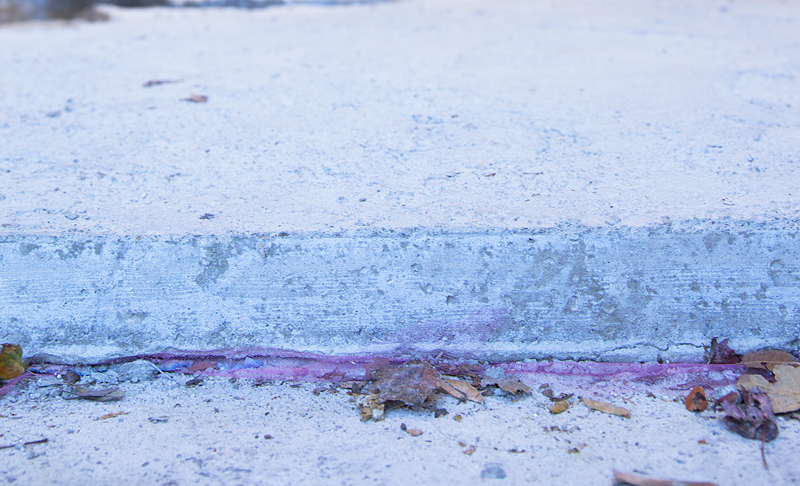
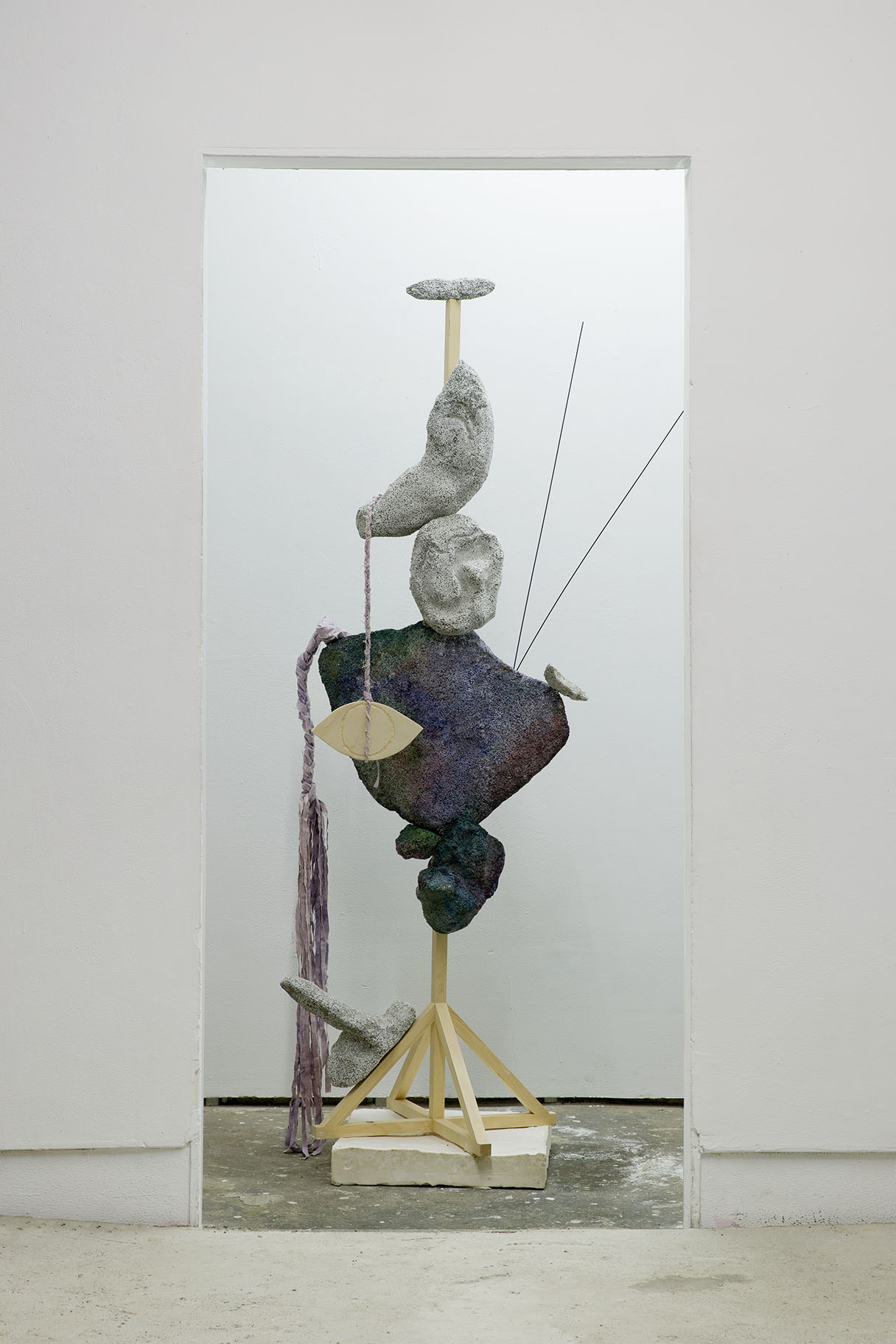
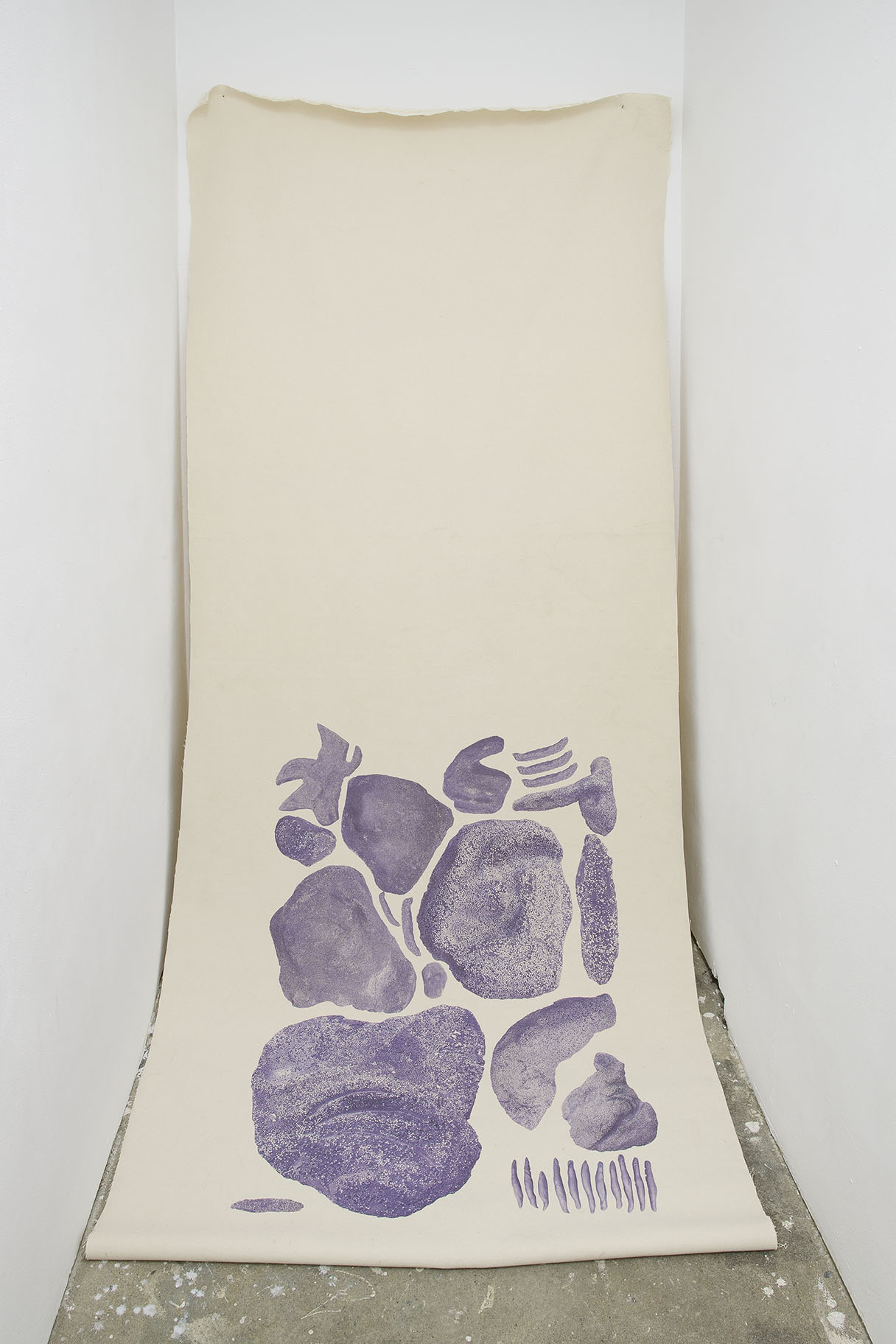
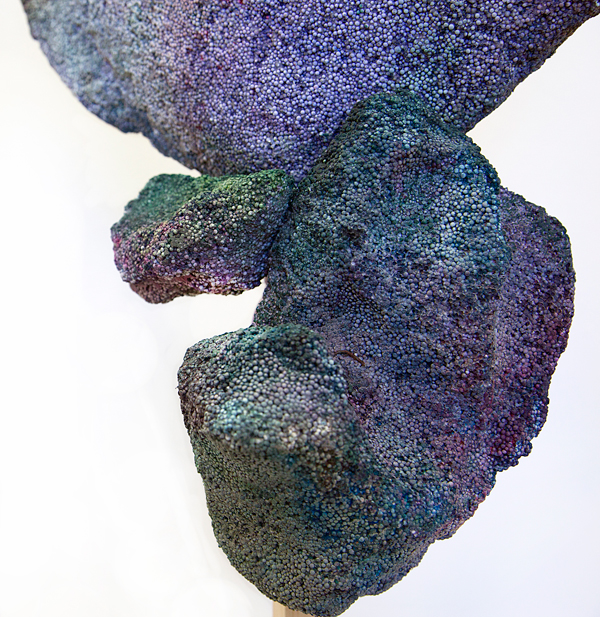
Another dimension to Anna Daniell’s installation is the textile index of the work, placed directly next to sculpture. The visual index depicts the imprinted forms of the objects, and this component of the work connects to the recurring theme of mapping, also present in the works of Owen Armour and Melodie Mousset.
Taken as a whole, this exhibition presents a cohesive vision of the selected works in a compelling and poetic way. The artists Armour, Daniell, and Mousset each use spatial signifiers to allude to a larger entity, or a more complex system. For Daniell, the mapping on a textile in the two-dimensional form directly references its three-dimensional counterpart. Armour’s disjointed traces of body parts insinuate the physical intervention of the full human body, the artist’s body. Likewise, Mousset’s simulacra of her internal organs and skin refer to the composition of the body, and explore the possibilities of remapping, reconstituting, and altering the body.
The co-curators Victoria Bugge Øye and Marte Danielsen Jølbo have thoughtfully selected artists whose works formally complement each other, and conceptually, these artists are investigating moments of transition, each within his/her own practice. In relation to the title, Permanent Construction, the curatorial text refers to Pierre Huyghe’s concept of “unfinished” architecture, Chantier Permanent, developed together with architect Francois Roche in 1993. Huyghe cites a coastal community of the Mediterranean Sea whose inhabitants live in scaffolded structures, and their lives are in a transitory state, permanently ‘under construction.’ In a sociological sense, individuals are similarly under construction and are often shifting identities, values, even careers. Within the exhibition space, the curators are considering the negotiation of boundaries between architecture and self, between the built environment and the body.
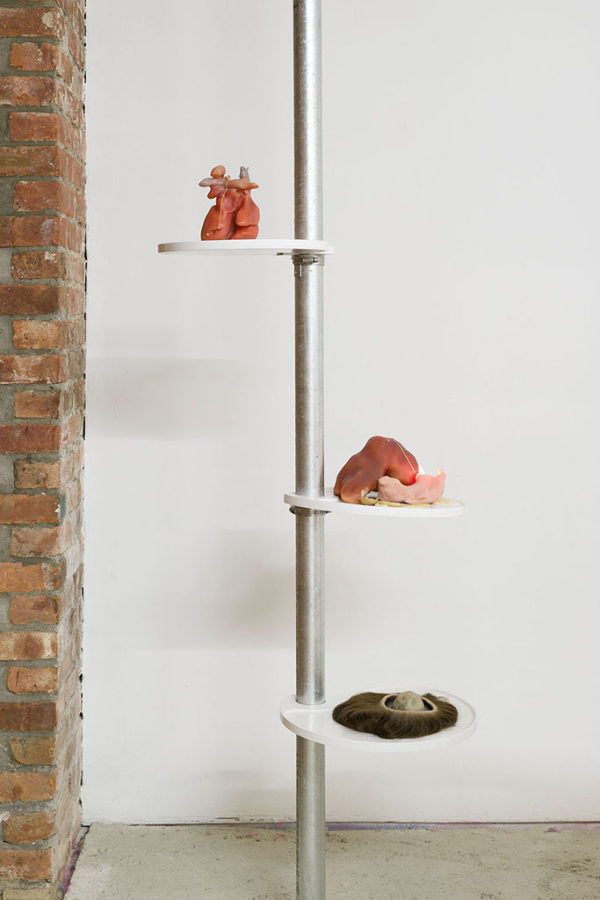
The work of Melodie Mousset, in particular, embodies this dichotomy of architecture and self. Not only does she erect a material framework for her body parts, but she also uses the body as a site of production. Her synthetic skin becomes the backdrop for her projections, as the selected video footage reflects her own travels and personal memories. The wax casts of the artist’s internal organs simultaneously question the boundaries between the self and surroundings. These objects are entirely unsettling, since they are meant to exist within one’s body and sheathed in layers of tissue and skin. In this way, Mousset’s work exemplifies the abject in contemporary art, following the legacies of artists such as Cindy Sherman, Mary Kelly, and Mika Rottenberg, for example.
Kelly, whose Post-Partum Document included the exhibition of stained nappy liners, and Rottenberg, whose video works incorporate imagery of fingernails and detached hair, each demonstrate the abject: that is, works that “transgress and threaten our sense of cleanliness and propriety particularly referencing the body and bodily functions.” 1
- "Abject Art” in the Tate Glossary. Tate Museum, London, UK. 5 December 2016. http://www.tate.org.uk/learn/online-resources/glossary/a/abject-art
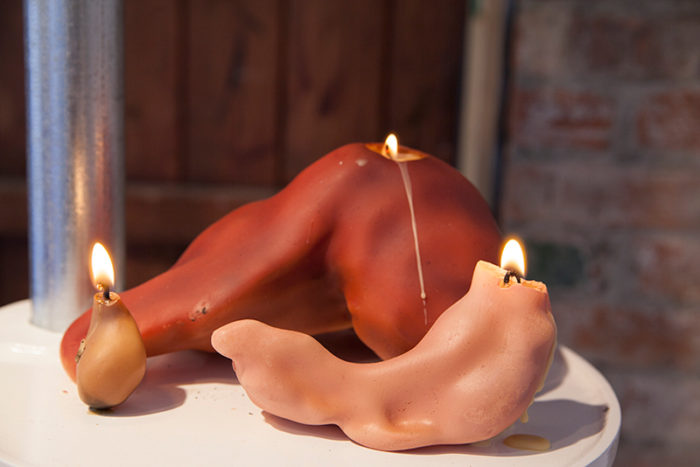
Beyond the work of Mousset, the installations of Armour and Daniell respond to the precarious nature of the human body. The composition of Daniell’s sculpture appears to be perilous with its dense material, yet it is deftly constructed and stable. The vestiges of Armour’s body are temporarily immortalized in the concrete. He merges the processes of creation and destruction by forming a false floor, which will disintegrate over time, and eventually become demolished in the de-installation. Each of the works in Permanent Construction has attained some state of completion but will be further developed or altered with time.
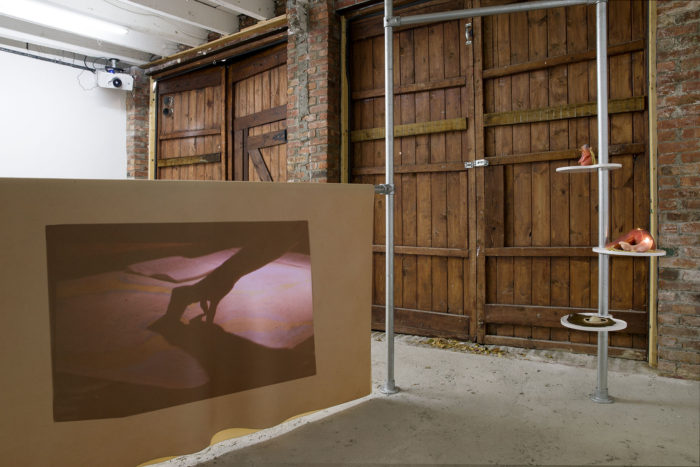
The persistent motif of the human body connects seamlessly to a recent exhibition at the David Roberts Art Foundation, titled Streams of Warm Impermanence and on view from September 16−December 10, 2016. Curated by Vincent Honoré, along with Nicoletta Lambertucci, this group exhibition is much larger in scope, and includes 17 emerging and established artists; however, the curatorial concept of “artworks that embody new iterations of flesh in a networked era” is reminiscent of the material traces of the body in Permanent Construction. 2
- “Streams of Warm Impermanence” exhibition text, David Roberts Art Foundation, London, UK. < http://davidrobertsartfoundation.com/projects/exhibition-streams-of-warm-impermanence-16-sept-2016-10-dec-2016/> 5 December 2016.
Overall, Permanent Construction is a beautifully curated exhibition that is engaging and expressive. Though some of the work is disconcerting, such as the synthetic skin, that sensation of being uncomfortable is often an effective aspect of contemporary art. The didactic text (written by Victoria Bugge Øye and Marte Danielsen Jølbo and presented to visitors by the gallery staff) concisely articulates the curatorial framework, as well as provides crucial information on each work. Moreover, the dialogue among the works of Armour, Daniell, and Mousset is carefully crafted, and spatially, each work is given ample consideration and presence. This process-oriented work that is under permanent construction, and therefore unfinished in some regard, allows for some degree of growth, improvement, and progression. Even in the context of the self, the constant assessment of one’s views, priorities, and aspirations can be affirming. If we, as individuals, are open to new adjustments and to absorbing new perspectives, the concept of permanent construction on ourselves can heighten our potential and capacity for change.
Kimi Kitada is an independent curator based in New York. She is currently the Public Programs & Research Coordinator at Independent Curators International (ICI). Recent curatorial projects include: (in)complete at TEMP Art Space, New York (2013), 7×8 Curatorial Conversations at Budapest Art Market, Hungary (2013), Postscript: Correspondent Works at artQ13, Rome (2015), For All the Vanished Things: Jee Hee Kang at Centre for Social Innovation, New York (2016), and reset at Garis & Hahn, New York (2016). She is a Co-Founder of alt_break art fair, which provides free and accessible contemporary art programming and exhibitions through partnerships with local, community-based nonprofits in New York. Kitada received a BA in Art History and Classics from Bucknell University and an MA in Museum Studies from New York University.
NOTE: Due to bias, CAS Co-editor Marte Danielsen Jølbo has not been part of the editorial decisions in regards to above review. Co-editor Heather Jones has been functioning director on the text.


